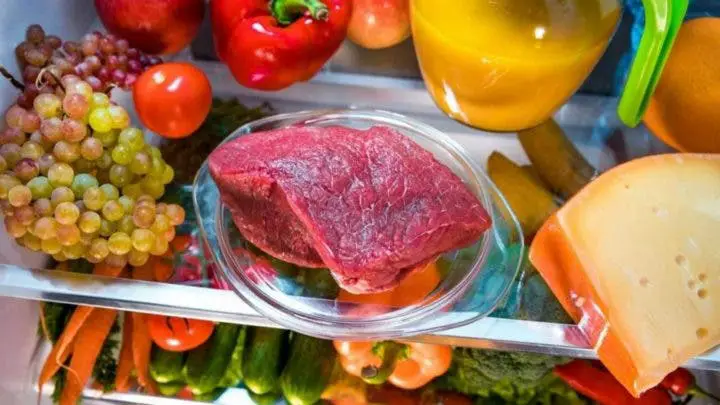Few people today give the necessary attention to the dangers of cross contamination , and misinformation about it offers greater possibilities for foodborne illness due to the transfer of bacteria and microorganisms from one food to another.
The estimated number of people who contract a foodborne illness is as high as 600 million in the world, unbelievably high not to be taken seriously. And while it is true that there are several factors that cause these conditions, in most cases it is a direct result of cross contamination.
If you don't know how to avoid it, we help you by providing a guide on what you need to know about cross contamination.

What is cross contamination?
Cross contamination can be defined as the transfer of microorganisms or bacteria from one substance to another , although there are also transfers of food allergens, chemicals or toxins.
There are several places where cross contamination can occur , some of them are as follows:
- Primary food production (from plants and animals on farms)
- During the harvest or slaughter of animals
- Secondary food production (processed and manufactured foods)
- Food transportation
- Food storage
- Food distribution (markets)
- Food preparation and serving (restaurants or at home)

3 types of cross contamination
1. From food to food
It is logical that if a contaminated food approaches an uncontaminated one, it will transfer its bacteria. To back this up, a study claims that raw or poorly washed food can accumulate large amounts of bacteria. Among them the following:
- Salmonella.
- Clostridium perfringens.
- Campylobacter.
- Staphylococcus aureus.
- Listeria monocytogenes.
All of them are harmful to health (Finn, Condell, McClure, Amézquita and Fanning, 2013). If you want to avoid them, it is best to pay attention to green vegetables, bean sprouts, rice leftovers, unpasteurized milk, white cheeses, cold cuts, and raw eggs and seafood, since they are the foods with the most risk of containing bacteria . Also, any leftover food you have in the fridge also has bacteria.
So remember to eat leftovers within 3-4 days after you cook them.

2. From surfaces to food
Bacteria survive for a long time on surfaces like countertops, kitchen utensils, cutting boards, storage containers, and more. For this reason it is essential that all of the above are disinfected or washed regularly. However, this type of contamination can occur both in the home and in the manufacturing process.
A great tip is not to use the same knife and board to cut raw meats and vegetables, since eating raw vegetables with these bacteria can lead to a foodborne illness. On the other hand, improper preservation of food products can also cause cross contamination .

3. From people to food
It is very easy for us to contaminate food: it only requires a transfer of bacteria from the body or clothing to the food. For this reason, experts emphasize washing hands before preparing a dish and also every time the hands come into contact with another product (Robinson et al., 2016).
In addition, other studies verify that using a cell phone or cleaning your hands with a dirty apron or towel while cooking can contaminate your hands and transfer bacteria to food (Koscova, Hurnikova and Pistl, 2018).
However, one analysis found that cooking safety education both at home and at work can significantly decrease the risk of cross contamination (Young et al., 2015).

Side effects of cross contamination
The consequences of cross contamination can vary depending on the individual and their level of severity.
Minor side effects
- Stomach ache
- Loss of appetite
- Headache
- Sickness
- Diarrhea.
These effects can occur in the first 24 hours after eating contaminated food or up to several weeks later.
Severe side effects
- Diarrhea for more than 3 days
- Bloody stools
- Fever
- Dehydration
- Organ failure and even death
Seek medical help immediately if symptoms last longer than 1-2 days

People at risk of cross contamination
The groups most at risk for disease from cross-contamination are:
- Pregnant women
- Children under 5 years
- Adults over 65 years
- People with weak immune systems (with cancer, HIV, severe diabetes)
How to avoid cross contamination?
- Avoid buying food products that are close to their expiration date
- Store raw meat in airtight containers or sealed bags at the bottom of the refrigerator so its juices do not contaminate other products
- Wash your hands with soap and water for at least 20 seconds
- Disinfect and wash kitchen utensils regularly
- Use different boards to cut meats and vegetables
- Use clean towels and sponges
- Cook food to proper temperatures

conclusion
The consumption of contaminated food can end up in cases that are very harmful to health. Fortunately, there are many ways to prevent it.
Start immediately to practice the different precautions that we have taught you in your kitchen and daily life; this way you will avoid scares in the future.
References
- Finn, S., Condell, O., McClure, P., Amézquita, A. and Fanning, S. (2013). Mechanisms of survival, responses and sources of Salmonella in low-moisture environments. Frontiers in Microbiology . doi: 10.3389 / fmicb.2013.00331
- Koscova, J., Hurnikova, Z. and Pistl, J. (2018). Degree of Bacterial Contamination of Mobile Phone and Computer Keyboard Surfaces and Efficacy of Disinfection with Chlorhexidine Digluconate and Triclosan to Its Reduction . International Journal of Environmental Research and Public Health. doi: 10.3390 / ijerph15102238
- Robinson, AL, Lee, HJ, Kwon, J., Todd, E., Rodriguez, FP and Ryu, D. (2016). Adequate Hand Washing and Glove Use Are Necessary To Reduce Cross-Contamination from Hands with High Bacterial Loads. Journal of food protection. doi: 10.4315 / 0362-028X.JFP-15-342
- Young, I., Waddell, L., Harding, S., Greig, J., Mascarenhas, M., Sivaramalingam, B. (…) Papadopoulos, A. (2015). A systematic review and meta-analysis of the effectiveness of food safety education interventions for consumers in developed countries. BMC public Health . doi: 10.1186 / s12889-015-2171-x